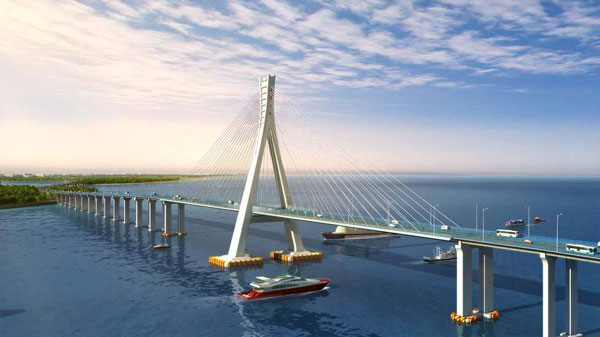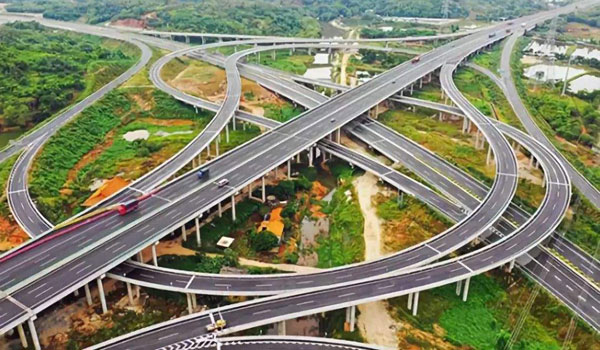QUALITY TESTING
Steel Brazed Concrete and Its Quality and Inspection
Steel fiber reinforced concrete (SFRC) is a new type of composite material with excellent performance and wide application by adding steel fiber into concrete. Because steel fibers can prevent concrete from cracking, their tensile strength, flexural strength and shear strength are obviously improved, and their fatigue resistance, impact resistance, post-crack toughness and durability are also greatly improved. At present, it is widely used in buildings, water conservancy, roads and other structures.
The main shapes of steel fibers are flat, hooked, thriving, concave-convex and irregular. The bonding strength of steel fibers is different from that of concrete because of their different shapes. Therefore, the bonding strength of concrete can be more than twice as different as that of steel fibers. The failure of steel fiber reinforced concrete is mostly pulled out rather than shortened. Therefore, improving the bond strength between fiber and concrete is the main control factor to improve the effect of fiber reinforced. There are three ways to increase the bonding length of fibers, i. e. the slenderness ratio, but it should not be too long. The second is to improve the bonding performance of concrete to steel fibers. The third is to improve the shape of fibers and increase the friction and biting force between fibers and concrete.
The mixture of steel fiber concrete is made of cement, water, coarse and fine aggregate, steel fiber and chemical additives or admixtures when necessary. The proportions of raw materials in steel fiber reinforced concrete should meet the following requirements: first, to meet the strength and durability required by the project, and generally to meet the requirements of compressive and tensile strength for construction projects. Secondly, the workability of the steel fiber reinforced concrete mixture should meet the construction requirements. Thirdly, it should be economical and reasonable to give full play to the reinforcing role of steel fibers under the condition of meeting the engineering requirements. Reasonable determination of steel fiber and cement dosage can reduce its cost.

It is very important for the quality inspection of steel fiber reinforced concrete. First, the inspection of raw materials and mixtures, which is of great practical significance, can identify problems as early as possible and take timely measures. Secondly, it is necessary to inspect the quality of hardened steel fiber reinforced concrete, which can not only evaluate its quality, but also analyze the problems in construction control in order to improve it. Quality inspection of steel fibers: First, the inspection of their size and shape. The length deviation of steel fibers should not exceed 10%. Ten pieces of steel fibers are randomly selected from each batch of products and measured by calipers. The qualified rate of deviation should not be less than 90%. The average value of 10 pieces of steel fibers can meet the deviation requirement at the same time. The average deviation of diameter or equivalent diameter of steel fibers is not more than 10%. For circular section, 10 samples are sampled in each batch. The diameter of circular section is measured by caliper. The deviation of the average diameter value obtained meets the requirements. For non-circular section, the average equivalent diameter is determined by weight rule. 100 samples are randomly sampled in each batch. The weight of circular section is measured by balance. The equivalent average diameter obtained by measuring its length meets the requirements. The deviation of length-diameter ratio of steel fibers is less than 10%. The deviation of length-diameter ratio calculated from measured average length and measured average diameter or equivalent diameter meets the requirements. The qualified rate of steel fiber shape is not less than 90%. The second is to test the tensile strength of steel fibers. The tensile strength of steel fibers shall not be less than 380 mpa, which may be put forward separately when the project has special requirements. Ten roots were randomly sampled from each batch for tensile strength test. The average value measured should not be lower than the prescribed value, and a single root should not be lower than 90% of the prescribed value. The third is to test the bending property of steel fibers. Steel fibers should be able to withstand continuous bending 90 degrees along the diameter of 3 mm steel bars. 10 steel bars are randomly sampled in each batch. The circumference of each steel bar along the diameter of 3 mm is manually bended 90 degrees once. There are at least 9 broken roots. Fourthly, the impurities are tested. The surface of steel fibers shall not be greasy or coated with harmful substances or other impurities or soil layers affecting the bonding between steel fibers and concrete. The total weight of adhesives, seriously rusted steel fibers, rust powder and impurities contained in steel fibers due to poor processing shall not exceed 3% of the total weight of steel fibers.
Testing of other raw materials: Cement, water, aggregate, admixtures and mixtures used should conform to the current relevant standards and specifications for raw materials used in concrete. Seawater and sea sand shall not be used in mixing steel fiber concrete. The total chloride content in the mixture of steel fiber reinforced concrete shall not exceed 1% of the cement content for ordinary steel fiber and reinforced steel fiber reinforced concrete in dry environment or with moisture-proof measures. For steel fiber reinforced concrete in wet environment without chloride ion or in wet environment with chloride ion, it should not exceed 0.3% and 0.1% of cement content, and for prestressed steel fiber reinforced concrete and steel fiber reinforced concrete in corrosive environment, it should not exceed 0.06% of cement content. The diameter of coarse and fine materials used in steel fiber reinforced concrete is not easily larger than 20 mm or 2/3 of the length of steel fiber.

Inspection of steel fiber reinforced concrete mixtures: The workability of mixtures can directly reflect the quality control of mixtures construction. When the slump or vitamin consistency of mixtures, cohesiveness and water retention fluctuate greatly, it is usually caused by mixing errors or large fluctuations of water content of sand and gravel. Often checking the workability of mixing material at the outlet of mixer is an important link in the quality control of steel fiber reinforced concrete construction. Check the water-cement ratio of mixing material, we can find out the change of water-cement ratio, if there is a big fluctuation. The causes should be analyzed and solved in time. It is also necessary to check whether the steel fiber reinforced concrete in the mixing material is evenly dispersed and whether there is agglomeration or not. The volume content of steel fiber, density and air content of steel fiber reinforced concrete are measured in order to find out the problems and solve them in time.
Strength proposals of steel fiber reinforced concrete: According to the nature and requirements of the project, compressive strength and tensile strength or compressive strength and flexural strength tests are carried out respectively. If there are special requirements, frost resistance and impermeability tests should be carried out. The production, quantity and evaluation of strength test specimens can be carried out in accordance with the current specifications for construction acceptance of concrete projects and the national standard "Criteria for inspection and evaluation of concrete strength".

